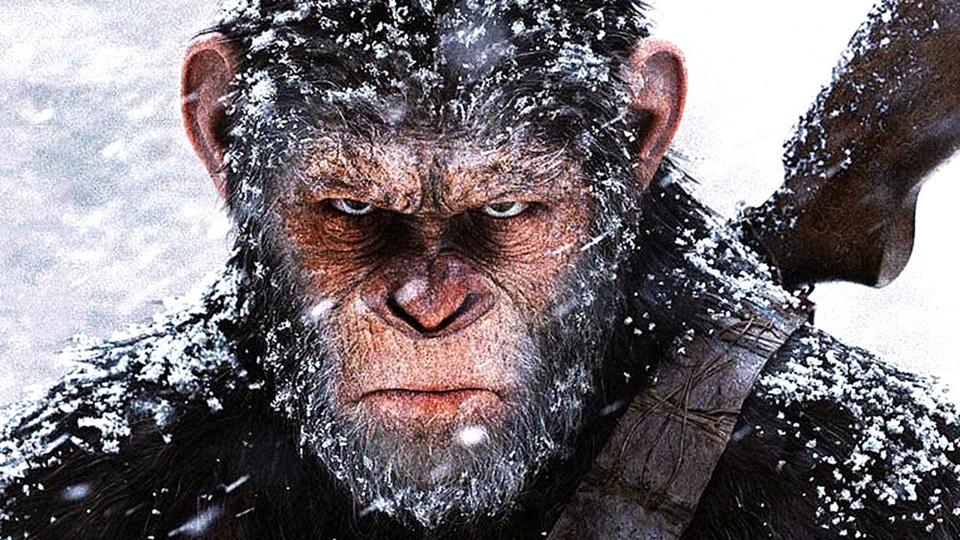While dangling from a branch of my favourite tree, I often wonder what it would be like to be human. I envisage myself wearing trousers and doing human things, like eating in restaurants and attending Gorillaz concerts. I also fantasise about going to pubs and getting heavily inebriated, comfortable in the knowledge that one of those Ubers will take me home if I can no longer feel my legs. It all just sounds so wonderful.
Well, luckily for me, War for the Planet of the Apes, the final instalment of Matt Reeves’s prequel trilogy, offers the closest thing to chimps acting like humans I’ll probably ever see. Apart from the originals, which are basically my Bible.
The film titles in this new trilogy have been confusing to say the least, with a Rise somehow coming before a Dawn, and this last one being called War, even though there’s not much warfare going on. But who am I to criticise the brilliant human beings who made this? They clearly understand the chimpanzee contingent of their audience, representing them in the most flattering way since Curious George.
Picking up where Dawn left off, the film initially focuses on the imminent extinction of humanity, caused by a global-wide outbreak of monkey AIDS, but it soon turns its attention to the ape leader Caesar (Andy Serkis), who finds himself in a moral dilemma when the human colonel (played menacingly by slaphead Woody Harrelson), breaks into his home to presumably steal all of his bananas. Enraged by this cowardly act, Caesar must resist his primal urge to brutally crush his enemy’s head with a massive rock. The fact that he knows this would be immoral shows just how human he has become.
OOH OOH OOH!!! Highly trained chimp Andy Serkis is excellent in the role of Caesar. He is a truly talented ape who imbues the character with a host of realistic, human qualities, like the way he stands on his legs for extended periods of time without having to balance on his knuckles, and pulling all sorts of uncanny facial expressions that I have seen used by great human actors, such as George Clooney and William Baldwin. There is a particularly emotional scene where he discusses relocating all of the apes with his orangutan friend, and his sorrowful frowns say far more than any amount of sign language ever could. ‘This is surely an Oscar-worthy performance,’ I thought to myself while peeling the skin off a delicious Red Dacca.
Throughout the 140 minute run-time I could feel myself gradually starting to understand what it is like to be human. OOH OOH AAH AHH!!! That is no doubt down to the carefully crafted character arcs that have developed over the course of the trilogy. By the time we reach this dramatic finale, all of the apes are fully believable as human beings – one of them even wears a gilet and woolly hat. Their sense of morality is so strong they’ve basically become more human than the humans. A world of dinner jacket-wearing chimps with banana shops on every corner seems inevitable from this point.
I did think things slowed down a bit in the middle when the apes were captured and forced to build a giant wall. The obvious parallels to monkey concentration camps (otherwise know as enclosures) were slightly misjudged and a bit offensive, but it couldn’t tarnish the profound statement this film makes about equality for chimps. I was so engrossed I consumed an entire crate of nuts within the first half hour and had to resort to eating my daughter’s nits for the rest of it. Spider-Man didn’t make me do that.
My doctor says I am an extremely ill human who is just imagining being a chimpanzee, but if he’d seen War for the Planet of the Apes he would understand that there is hardly any difference between the two.
